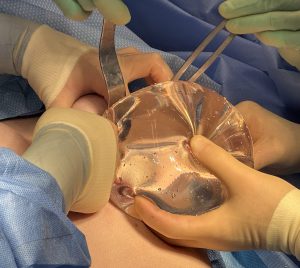Introduction
Breast augmentation is one of the most common aesthetic body contouring procedures and among the most implant-dependent. Silicone gel implants are available in a wide range of sizes—from approximately 150 cc to 800 cc. While implant size will look different depending on each patient’s body, sizes can generally be categorized as follows:
-
Small: under 250 cc
-
Medium/Average: 250–600 cc
-
Large: over 600 cc
When the term “XL” is used, it typically refers to implants exceeding 800 cc, although some surgeons use this term for sizes over 600 cc. The motivations for choosing XL implants include:
-
Achieving a dramatic increase in breast volume and projection
-
Better matching a larger body frame or aesthetic preference
-
Restoring volume lost after weight change or previous augmentation
Surgical and Anatomical Considerations
Larger implants introduce additional challenges, including:
-
Increased tissue stress: Heavier implants place more tension on breast tissue, skin, and supportive structures, potentially leading to sagging, stretching, or the need for future revision.
-
Greater surgical complexity: Larger implants require longer incisions, expanded implant pockets, and sometimes internal mesh or tissue reinforcement.
-
Body proportion and lifestyle alignment: The selected size must harmonize with the patient’s anatomy and activity level.
An essential question in XL augmentation is whether the implant will physically fit. In primary augmentations, implants over 800 cc are rarely feasible due to limited tissue capacity. However, in secondary augmentations or revisions, the issue becomes how much additional volume can safely be achieved beyond the current implant size.
Case Study
A young female patient presented with indwelling 925 cc silicone breast implants placed through large inferior pole (inframammary) incisions. She requested the largest possible increase in silicone gel implant size that could be safely accommodated.
Under general anesthesia, the inframammary scars were reopened, and the existing intact implants were removed. They were compared side by side with high-profile XL 1340 cc silicone gel implants, clearly demonstrating the increased base diameter and projection—a 45% volume increase.

The right implant was placed and closed first to evaluate the comparative effect, followed by the left side.
Intraoperative comparison confirmed a noticeable and proportional increase in breast volume and projection.
Discussion
Based on clinical experience, a 50% volume increase is typically achievable and safe during a first implant exchange (primary to secondary augmentation). In subsequent exchanges, the feasible increase usually declines—around 33% during a second exchange. In this case, a 45% increase was achieved, pushing the upper limit of what could safely fit anatomically.
The patient specifically requested silicone gel implants. Saline implants or staged tissue expansion were not considered. Historically, U.S. manufacturers offered silicone implants only up to 800 cc, limiting such procedures. However, newer high-capacity implants—now available up to 1450 mL—have expanded surgical options for patients desiring XL or even XXL volumes.
Key Points
-
Existing 925 cc silicone implants were replaced with 1340 cc implants—a 45% size increase.
-
The procedure required circumferential capsulotomies to accommodate the larger implant base diameter.
-
Due to the increased implant weight and extensive capsulotomies, there is an elevated risk of implant bottoming out over time.
Barry Eppley, MD, DMD
World-Renowned Plastic Surgeon


